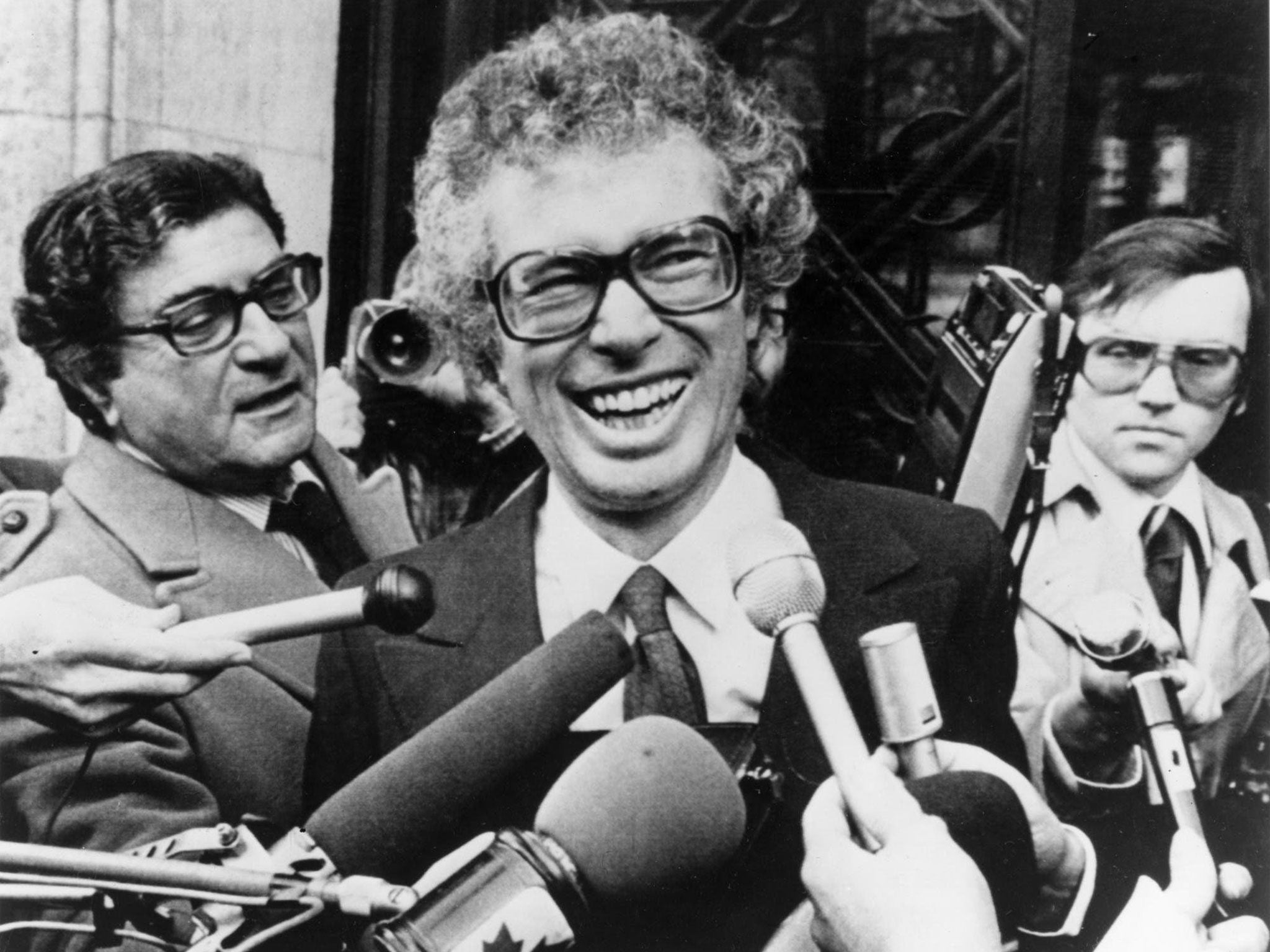Ken Taylor: Canada's ambassador in Tehran who played crucial role in rescue of US diplomats
His deeds hit the headlines as recently as 2012 when they featured in Ben Affleck's Argo

It ranks among the most celebrated diplomatic “exfiltrations” in history – six fugitive American diplomats spirited out of Iran in January 1980 at the height of the hostage crisis at the US embassy in Tehran. And Ken Taylor, the 45-year old career diplomat who happened to be Canada’s ambassador there, was at the very centre of it.
Calm and competent, and possessor of an understated sense of humour, Taylor had been in the job since 1977, and had quickly proved his mettle by quickly recognising how the Shah’s regime was collapsing and the dangers posed by the return of Ayatollah Khomeini in January 1979. His foresight enabled the smooth and successful evacuation of 850 Canadian citizens resident in Iran.
But his supreme moment came when a mob of radical Iranian students and Khomeni supporters revolutionaries stormed the American embassy on 4 November 1979, taking prisoner more than 50 of its staff. Six US diplomats, however, managed to escape. For days they were passed from one temporary refuge to another, until they arrived at the home of a Canadian diplomat, John Sheardown.
There they met Taylor, the ambassador, who instantly agreed to give them shelter. That night he took three of them into his residence, and began to devise a plan with the government in Ottawa and the US authorities to get the diplomats out of Iran. The scheme that emerged involved the CIA sending in its own team to Tehran posing as Canadian film-makers working on a project. Secretly, they would make contact with the fugitive diplomats and give them Canadian passports complete with fake Iranian visas, and leave the country together.
The entire process took the best part of three months, with nerves increasingly on edge in the Tehran embassy, in Ottawa and Washington. The fear was not only that the Iranians would realise six diplomats were missing, but also that the entire rescue project would be blown by a leak. In fact the Washington correspondent of the Montreal paper La Presse, his suspicions aroused by conflicting US accounts of the exact number of hostages, did piece together what was happening.
But the La Presse editors were persuaded not to publish, and in the end everything went without a hitch, the six leaving Tehran on a Swissair flight on 27 January 1980. A few days later Taylor closed the Canadian embassy “temporarily”, expecting to wait out events in Kuwait. But the crisis between Iran and the West only deepened, and he never returned as ambassador.
La Presse, meanwhile, ran its scoop within 24 hours, and Taylor became a hero north and south of the 49th parallel. Cashing in on his popularity, the Foreign Ministry posted him to New York in 1980 as Canada’s Consul General. Dozens of awards and citations were showered on him, including the US Congressional Gold Medal. In 1981 a television documentary, Escape from Iran: The Canadian Caper, that chronicled the episode (albeit focussing on the Canadian aspects of the story, since the CIA’s role was still heavily classified), only heightened his fame.
In 1984 Taylor retired from the diplomatic service, turning down requests to enter Canadian politics and continuing to live in New York, becoming a senior executive at Nabisco Brands, and later RJR Nabisco. To the end, however, he retained his Canadian citizenship.
A native of Calgary in western Canada, Taylor received his undergraduate degree at the University of Toronto. But although the US was but the last stop on a 25-year diplomatic career that had begun in 1959 with a junior job in the mission to Guatemala, and included eight foreign postings, his ties with America were long and deep. He had taken an MBA at the University of California, Berkeley, where he met his wife Pat, and New York was a kind of homecoming. As late as this year, fans cheered to the rafters when his attendance was announced at a New York Rangers ice hockey game at Madison Square Garden.
In 2012, Taylor’s deeds hit the headlines again when the rescue of the diplomats was the subject of the Hollywood movie Argo, which won the 2013 Oscar for Best Picture. The film, in which its director, Ben Affleck, also starred as the CIA officer leading the exfiltration mission, created much outrage in Canada for its downplaying of the country’s role – presenting it almost as a bystander amid the CIA’s derring-do – and for its implication that, because the Agency decided to let Canada have the credit for the operation, the praise and awards that Taylor received were to an extent unmerited.
But those who most directly benefited from the ambassador’s courage and determination in those fraught weeks were in no doubt of the vital part he played. “I don’t think he [Taylor] ever doubted what he was doing was right,” Mark Lijek, a consular officer at the US mission in Tehran and one of the fortunate six, told Toronto’s Globe and Mail shortly after Taylor died of cancer.
“There was never any hesitation on Taylor’s part to offer us sanctuary. I remember him as he was then – young and with those big glasses and a big smile on his face. It was a big confidence-builder for us. Maybe it was the Canadian version of a stiff upper lip.”
Kenneth Douglas Taylor, diplomat: born Calgary, Alberta 10 May 1934; married Pat (one son); died New York 15 October 2015.
Join our commenting forum
Join thought-provoking conversations, follow other Independent readers and see their replies
Comments